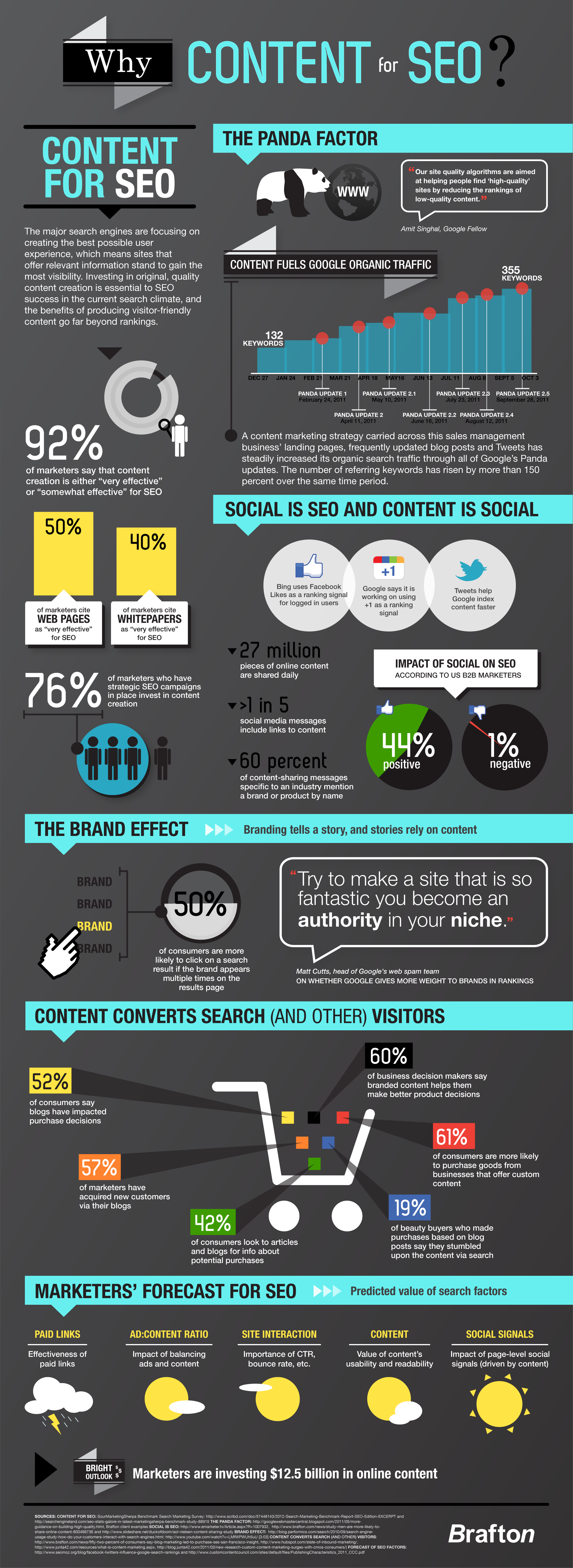
Want to see better SEO results? Think content.
Officials from Google and Bing have consistently emphasized their focus on the user experience, with Google’s Amit Singhal saying the search giant is dedicated to “helping people find high-quality sites in Google’s search results,” and Bing’s Stefan Weitz sharing a similar sentiment.
The bottom line is that a positive search experience translates into users’ ability to find quality information that answers their queries. Top-notch content is what searchers want, and it’s what search engines want to prioritize in results. Perhaps Bing’s Duane Forrester said it best when he reminded marketers at SMX Advanced that they should “never lose sight of the fact that all SEO ranking signals revolve around content of some kind.”
Check out our infographic: Why Content for SEO? It offers more information about using content to fuel search engine optimization. If you click on the infographic, you’ll be taken to a page with shareable images, and if you scroll down, you’ll find more insights about the benefits of content marketing when it comes to SEO.
Marketers say content works for SEO
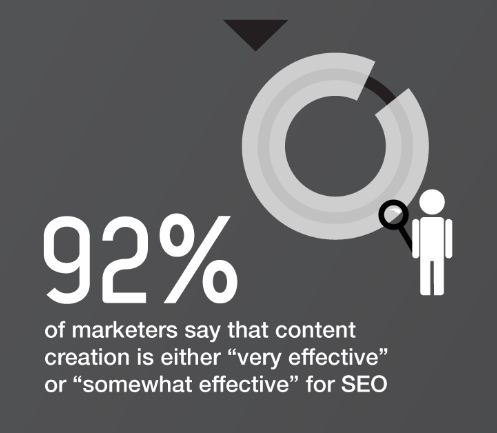
The power of content for SEO is clear, as 92 percent of marketers cite content creation as effective for search engine optimization. In MarketingSherpa’s latest Search Marketing Benchmark report, content came out a winner, named a top-performing strategy by survey respondents.
Web pages are the leading content for SEO gains, cited as “very effective” by 50 percent of marketers. But marketers should take note that not just any content will boost search performance – especially in the post-Panda searchscape.
Panda rewards quality content
Before Google rolled out its Panda updates, Matt Cutts consistently told webmasters they needed to focus on content for SEO. Since the Panda updates, just about everyone from Google is telling site owners they need to focus on content for SEO. Maybe this is a mild exaggeration, but Brafton has reported that Google’s post-Panda SEO advice (per a Webmaster Central blog post) is to assess content according to rigorous quality standards.
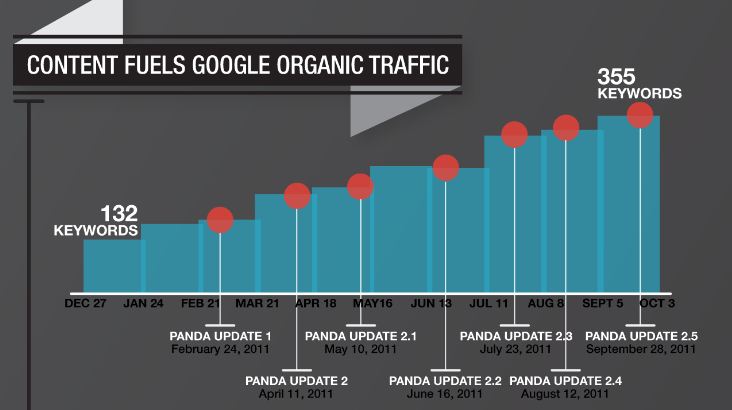 In our infographic, we highlight the case of a business website that launched a content marketing strategy in late February. The site updated its key landing pages and started publishing daily blog posts with a consistent keyword strategy, always focusing on information that would be most relevant to site visitors. This campaign started right around the time that Google rolled out its first Panda update, and – as the graph shows – the site’s Google organic traffic volumes climbed over four-week intervals from the time of launch straight through Panda 2.5. Plus, building its site with high-quality content has helped the business boost its number of referring keywords by more than 150 percent in the past eight months (amid Panda).
In our infographic, we highlight the case of a business website that launched a content marketing strategy in late February. The site updated its key landing pages and started publishing daily blog posts with a consistent keyword strategy, always focusing on information that would be most relevant to site visitors. This campaign started right around the time that Google rolled out its first Panda update, and – as the graph shows – the site’s Google organic traffic volumes climbed over four-week intervals from the time of launch straight through Panda 2.5. Plus, building its site with high-quality content has helped the business boost its number of referring keywords by more than 150 percent in the past eight months (amid Panda).
The showcased business took Google’s insight on the meaning of “high-quality” to heart. In a blog post on the subject, Google Fellow Amit Singhal says marketers should ask themselves questions about their site content, including:
- Does the article provide original content or information, original reporting, original research or original analysis?
- How much quality control is done on content?
- Does this article provide a complete or comprehensive description of the topic?
- Is this the sort of page you’d want to bookmark, share with a friend or recommend?
Singhal’s last question brings us to another point about content for SEO.
SEO is going social, and content fuels sharing
From Bing’s Facebook Friend Effect for logged-in users to Google’s efforts toward using +1 data as a ranking signal, search engines clearly want to prioritize the results that merit social sharing.
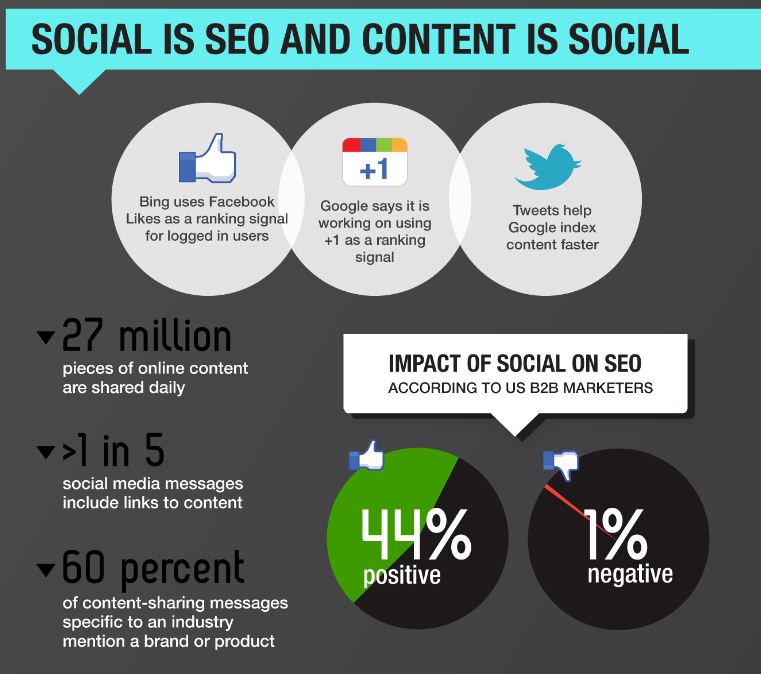
This means sites need to focus on publishing information that users will engage with and pass on to their friends – from Q&As and rich informational landing pages to fresh blog posts, industry news updates, timely infographics and more.
Build up your site with the content that your audiences want, then broadcast it to social fans and followers. Make it easy for them to pass on to friends by incorporating the sharing buttons on your content pages. Data from Nielsen’s content sharing study shows that people are ready to share when the content is worthy: 27 million pieces of online content are shared daily, and more than one in five social media messages include links to content. Plus, shared content frequently mentions brands by name.
Speaking of brands…
Searchers click brands, and content can establish brands
Search engineers haven’t explicitly said that brands have better performance when it comes to SEO, but the buzz on the searchscape is that brands have been faring better post-Panda. But what constitutes a brand today? And do they really get favorable rankings?
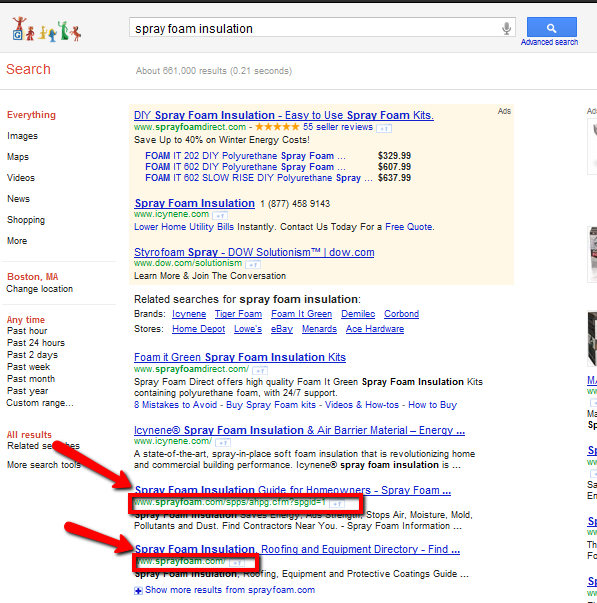
There’s a Google Webmaster Help video in which Matt Cutts answers the age-old question, “Is Google putting more weight on brands in search engine rankings?” While he says that he doesn’t think of it as “putting more weight on brands,” Cutts reminds marketers that Google wants to return high-quality results. To businesses focused on this issue, he says, “Try to make a site that is so fantastic that you become known as an authority in your niche.”
Similarly, Brafton has reported that the post-Panda search winners seem to be sites that establish themselves as thought leaders with information on a niche topic – and “information” is frequently high-level content that speaks to a specific industry or issue.
Plus, business sites with more information (or content pages) around a niche topic are more likely to have multiple pages that come up in the results for related, niche queries. For instance, my search for a very particular product, “spray foam insulators,” returns two results from SprayFoam.com on page one – the first being a “homeowners’ guide” about the benefits of spray foam insulation, and the second being a directory list of all of the site’s articles related to this subject. Brafton has reported that consumers are more likely to click on results from these very visible thought leaders (or “brands.”)
Content converts site visitors
Quality content makes your site visible in search engines, but perhaps more importantly for marketers, it can influence purchase decisions. More than half of marketers (57 percent) say their blogs have led to customer acquisitions, according to HubSpot’s Inbound Marketing Survey. From consumers’ perspective, it’s clear that content that can be easily discovered online is a preferred method of product and service research. Nearly three-quarters of shoppers prefer information from companies in the form of articles over ads, and 42 percent look to blogs for information about potential purchases.
The value of content in terms of converting search (and other) site visitors holds true whether you’re in the B2B or B2C sector: Sixty-one percent of consumers are more likely to buy from brands that offer custom content, and 60 percent of business decision makers say content helps them make purchase decisions.
While these numbers speak to the value of content anywhere across the web, a study from BlogHer demonstrate the value of SEO-friendly content, in particular: Nineteen percent of beauty buyers who say blog posts impact their purchase decisions report they stumble upon the most useful content via search.
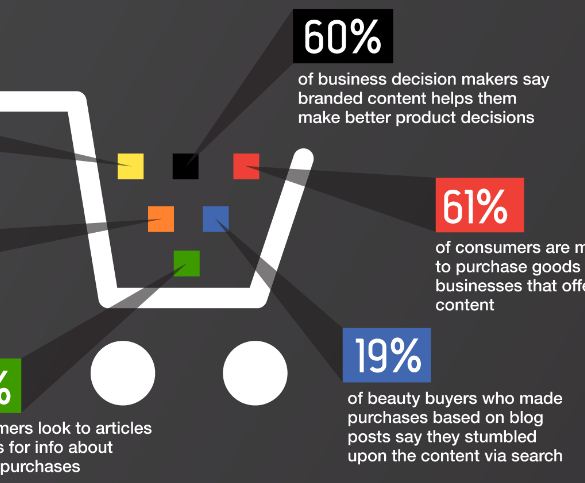
Content marketing is a competitive must
If all of these reasons don’t compel you to consider content marketing for SEO, you should remind yourself that your competitors are likely turning to content this year. There is a growing understanding of content and content-related factors as keys to SEO success. Marketers polled by SEOmoz generally agree that there is increasing search value in readable content, site interaction levels (which are related to whether users engage with site content) and page-level social signals (which are related to whether users want to share content).
Brafton has reported that online content budgets exceed $12 billion annually, and businesses that don’t want to be left behind should plan their campaigns and content spend accordingly.
This infographic was a collaboration between Brafton’s graphic design manager, Amy Ahrens, and yours truly – Katherine Griwert. If you find it useful, we hope you’ll share it and/or this blog – make “Why Content for SEO?” one of the 27 million pieces of online content shared daily. We also welcome comments, and we’re happy to talk more about SEO content that could work for your unique website: Find us at: http://www.brafton.com/contact

